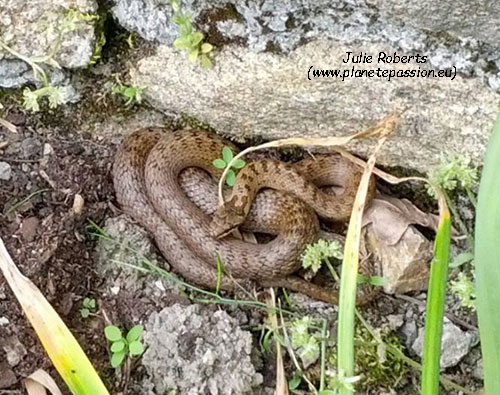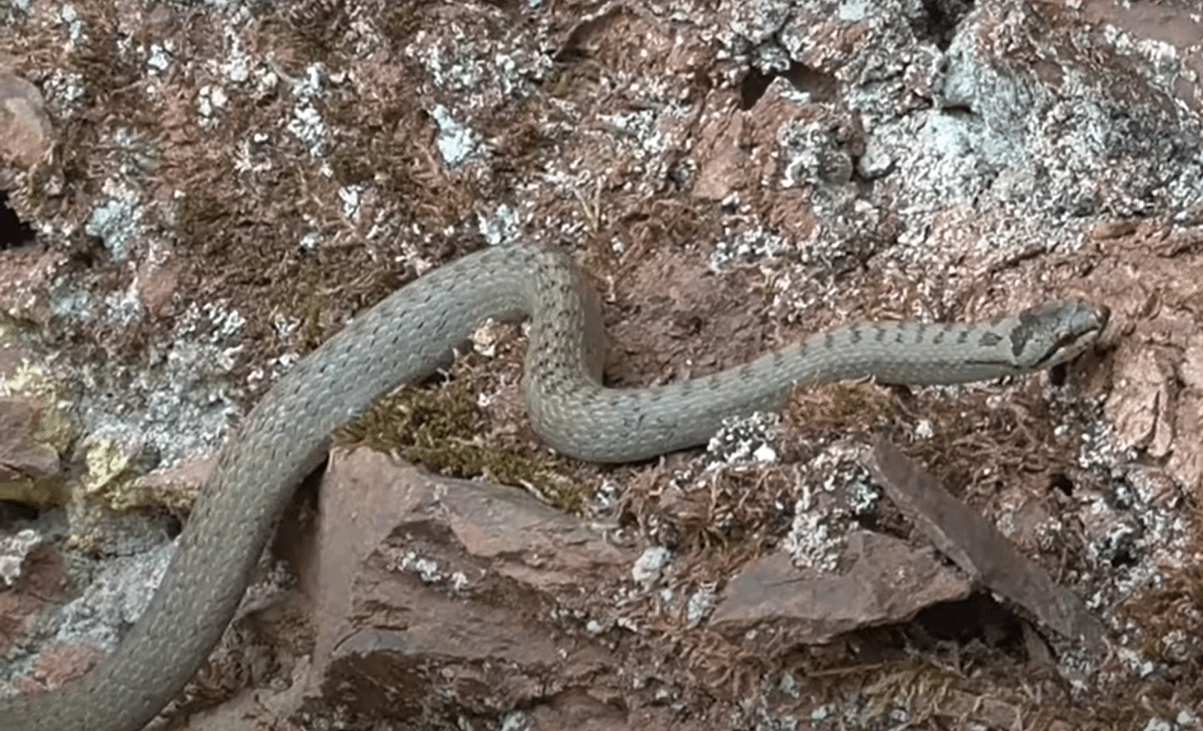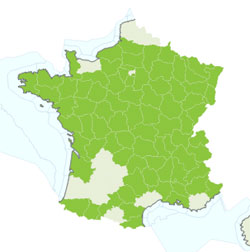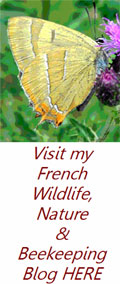Smooth snake
Coronella austriaca
Coronelle lisse
The Smooth snake is similar to the Southern Smooth snake, Coronella girondica
being 50 to 80cm long but more slender and with smoother scales which can have a marbled effect. The back has two rows of darker markings in pairs which join together to form transverse bands. The underside is a mixture of browns, greys and russets. The sides have darker flecks and at the rear of the head is a dark V with the V open towards the rear. Their eyes have round pupils and there is a relatively thick dark stripe that extends from each nostril, through the eye, and along the side of the head to a little beyond the neck.
They can be found in most parts of France although they are absent or rare in most parts of the south west. They are generally at lower altitudes where they prefer dry, sunny open situations that also offer shelter; open forests, hedgerows, old stone walls, old quarries, roadsides and vineyards. Prey is mainly lizards, but they will also eat small mammals and baby snakes.
They are a timid snake
which are diurnal and spend most of their time on the ground or frequently beneath the ground in holes and tunnels, although they will sometimes scale walls and climb into shrubs and hedges. When disturbed they rarely move fast, sliding slowly away their colouring blending with the background. Hibernation is quite late from November until March subject to climatic conditions
Coupling takes place twice
the first just after hibernation and the second in September / October. This species is ovoviviparous the young, between 4 and 14, are born after a gestation period of 6 to 12 weeks in a transparent mucus sac which they then exit being about 20 cm long. If coupling is late in the year or the weather conditions are bad the young will be born the following spring. Violent fights take place between males and also between the sexes at coupling times, twisting round each other and biting savagely, sometimes this ends in death.






